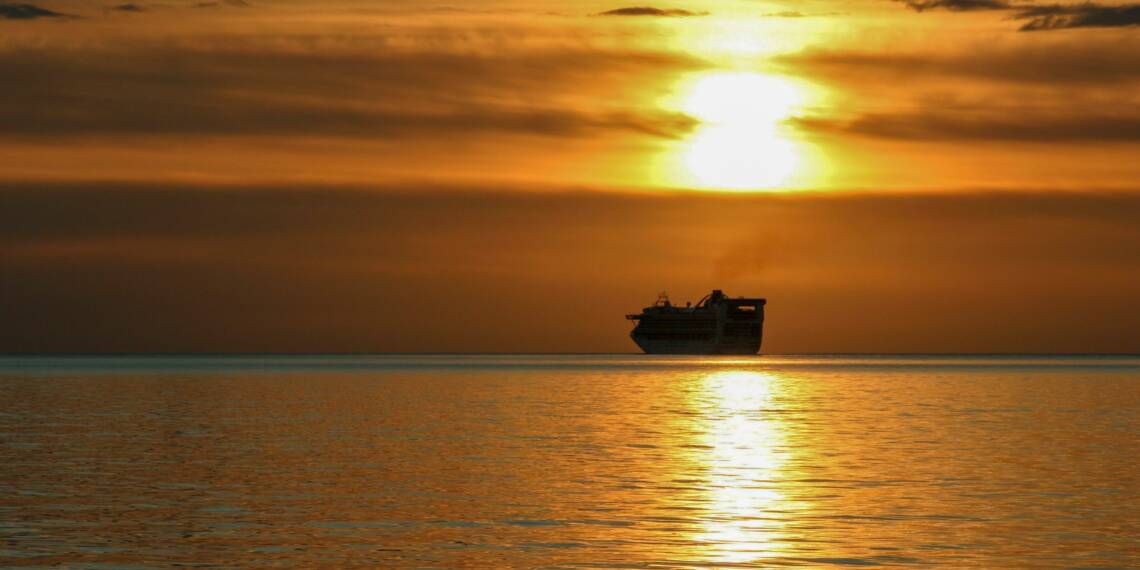
Time series from ferrybox monitoring
Concentrations of nutrients and chlorophyll-a, measured from the water samples collected by ferryboxes, provide us with information on the state of the Baltic Sea. See the measurements taken in the last year and compare them to the average values of measurements made in the 21st century.
Amount of algae is highest in spring and late summer
The total amount of algae is most commonly measured by analysing the chlorophyll-a content of a water sample. Chlorophyll-α is a green pigment used by phytoplankton and algae in photosynthesis. Its concentration reflects the levels of phytoplankton present in the water. In the time series below, it is clearly seen that the number of algae is highest in the spring. Another increase in algal abundance is in late summer following the increase in cyanobacteria. In the Gulf of Finland, the amount of algae is higher than in the Northern Baltic Sea or the Arkona Basin.
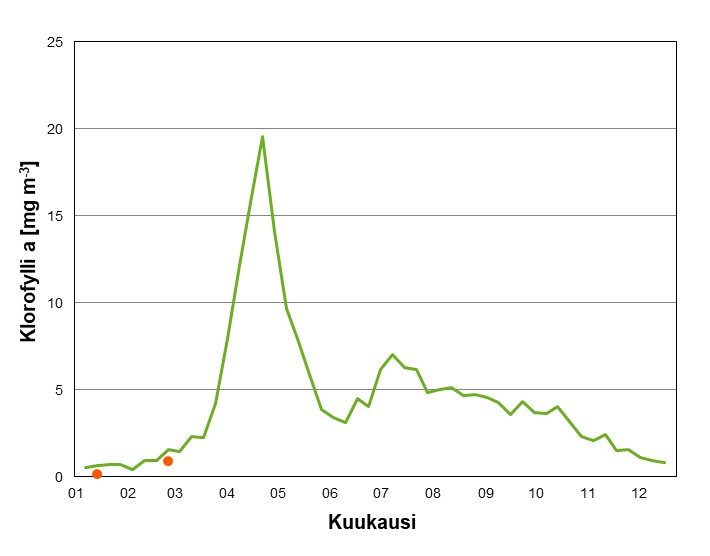
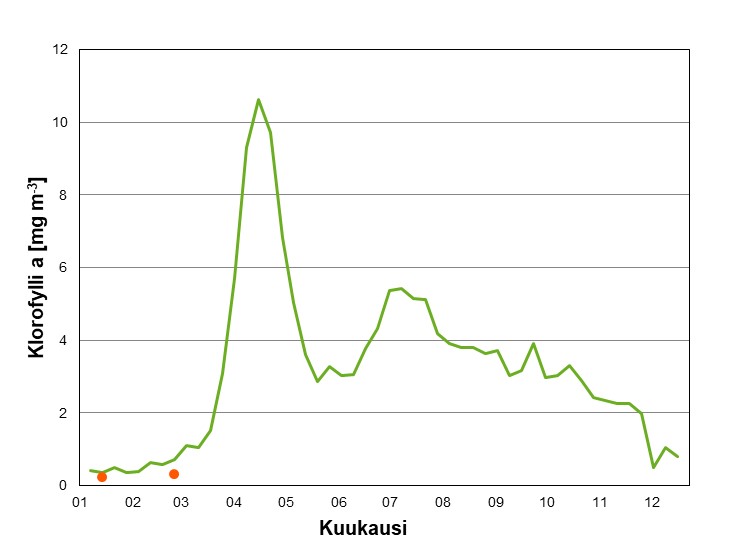
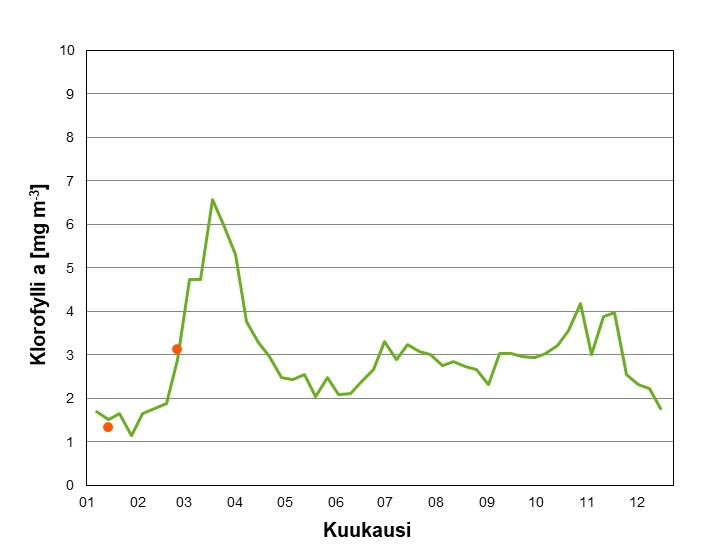
The phosphorus content in winter predicts how much blue-green algae will occur the following summer
Phosphorus is another nutrient that limits the growth of algae. The concentrations of nutrients in the winter season are used as one measure of eutrophication of the Baltic Sea. High levels of phosphorous in winter predict an abundance of blue-green algae in summer. In summer, the amount of phosphorus is lower than in winter. Phosphate concentrations in the Gulf of Finland are higher than in other areas, especially in winter.
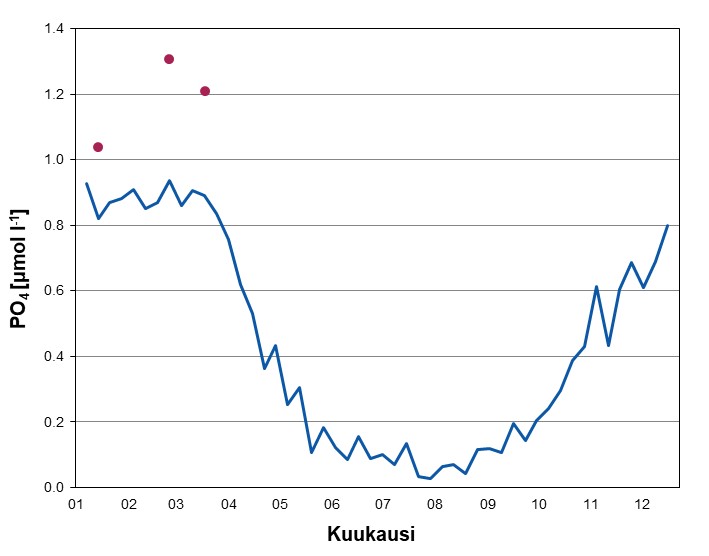
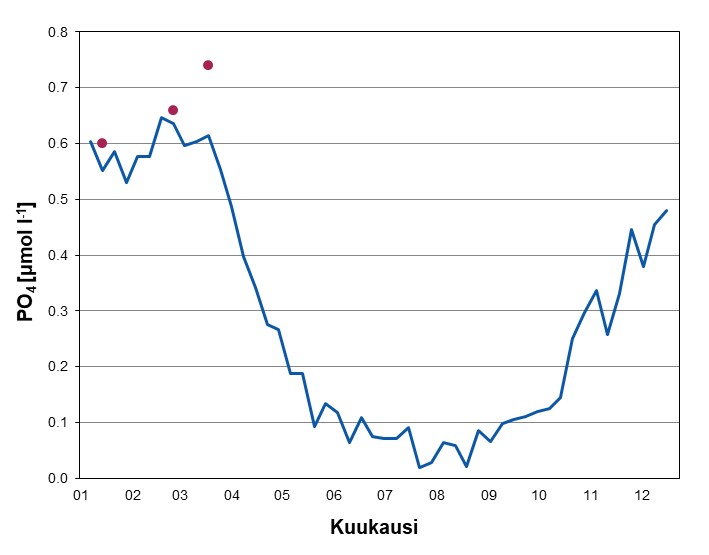
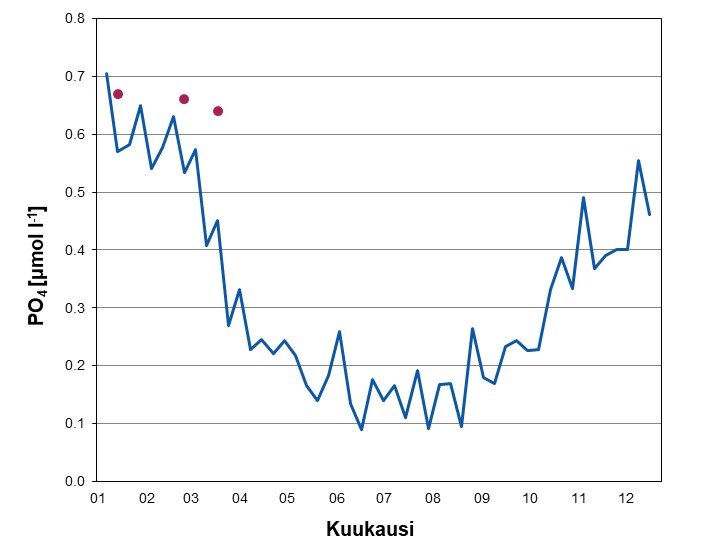
Nitrogen regulates algal growth
In addition to phosphorus, nitrogen is another nutrient that limits the growth of algae. The nitrogen content of the Baltic Sea is highest in early winter, but decreases in summer when phytoplankton use it as food. Nitrogen concentrations in the Gulf of Finland are higher than in other areas, especially in winter.
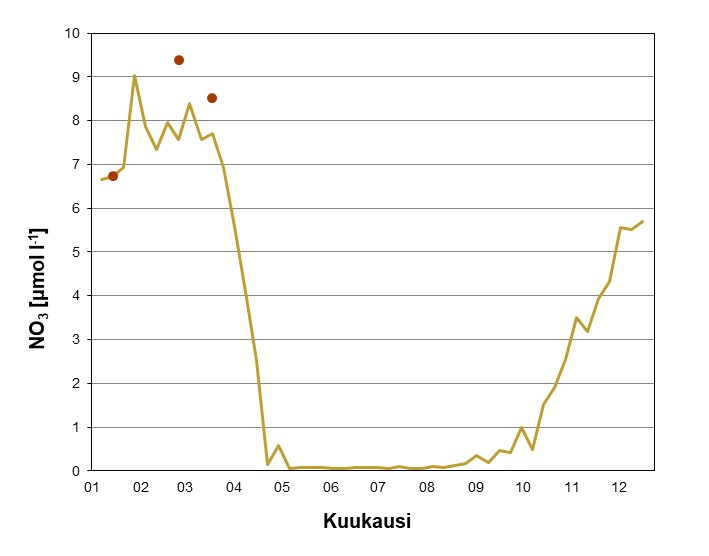
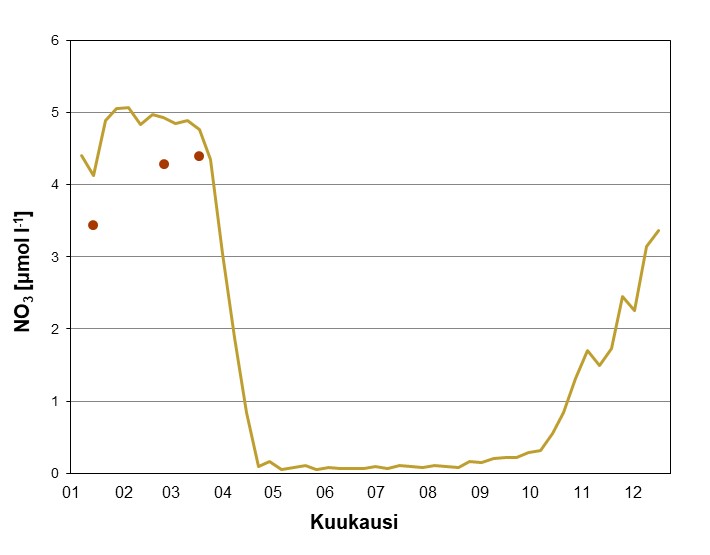
The data has been produced in cooperation with JERICO-RI, the research infrastructure for European coastal waters (Joint European Research Infrastructure network for Coastal Observatory).

